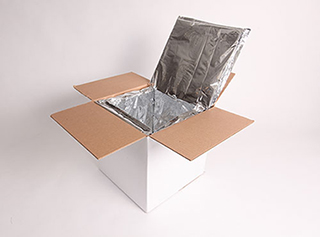Why are Polystyrene Coolers so bad for our environment?
Polystyrene coolers are currently perceived negatively because, after use, the majority of products made from the material are placed in landfills. Also, because they are so bulky, Polystyrene materials occupy a disproportionate amount of space in a landfill by volume. Polystyrene or styrofoam products are also typically brittle and therefore tend to break and fragment easily.
It takes 500 years for a Polystyrene cooler to decompose completely.
Why is Polystyrene more likely to end up in landfills?
It is difficult to collect.
- Polystyrene is very bulky relative to its weight, so it consists of very little solid material/mass relative to overall size.
- High volume/low weight materials yield very little resin (this is what recyclers are after).
The harsh reality is that most Styrofoam products we Americans discard do end up in landfills.
What are the solutions?
Sustainable Alternatives
When possible we Americans can use alternative products that are easier to re-use or transport to recycling centers. These materials are more likely to be collected and recycled as they are more desirable to recycling companies. The recycled materials are used to produce other “downstream” products such as carpet padding or other products. This is an example of “sustainability”.
What materials are likely to be recycled into other
- Compactable, dense materials
- Products with secondary market value
Materials that are more dense relative to the volume they occupy and also collapsible are better suited for collection and recycling.
When compared to bulky molded Polystyrene coolers, collapsible products made of denser materials are easier to collect and transport.
IPC’s GreenLiner is a collapsible insulation liner that is made of relatively dense polyurethane foam.
GreenLiner is Recyclable
- Because the liner is collapsible the panels can be collected and transported efficiently.
- There is also a large network of recycling centers nationwide that are willing to purchase or accept the material in order to produce carpet underlayment or ‘rebond’.
- Polyurethane foam is also easy to collect and transport because it is not brittle and it is easily compressible. These characteristics make the material ideal for collection and recycling.
- GreenLiner is ‘green’ becuase the collapsible, unbreakable panels can be: easily re-used or folded, packed and shipped to sender for re-use and/or safely transported to a recycling center.
- *A note about IPC’s CooLiner line of products. The material can be recycled at specialized recycling facilities that accept mixed plastics. However, the product is considered environmentally friendly by IPC in that it is constituted of 95% air by volume, wherein, when the air in CooLiner’s bubbles is deflated (a natural occurence over time) the remaining material is an ultra thin layer of plastic. This plastic is an inert, non-toxic, unbreakable and low volume material that will not occupy disproportianate landfill space and will not wash away and pollute bodies of water.




